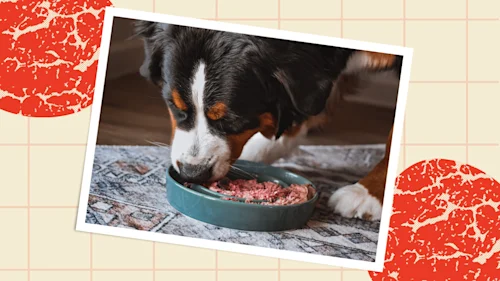
Is Grain-Free Bad for Dogs?
Table of Contents
Over the last few years, there has been a lot of confusion around this question: Is grain-free bad for dogs? The answer to this question is somewhat complicated. Why?
Dogs don’t need grains in their diet, which would seem to imply that a grain-free diet is superior to a grain-inclusive one. However, grain-free kibble uses other ingredients to substitute for grains, including lentils, peas, and other “pulse” ingredients.
So the short answer to the question about whether grain-free dog food is bad for dogs is that it depends on the type of food. Read on for more information about grain-free diets and their impact on dog health.
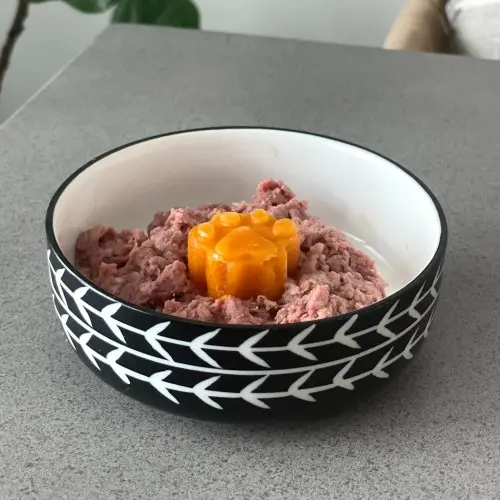
What Is Grain-Free Dog Food?
Technically, grain-free dog food is any diet for canines that doesn’t include grains. We Feed Raw can be considered a grain-free diet because it doesn’t contain any grains.
However, people often use the term “grain-free dog food” to refer specifically to kibble or canned food that uses potatoes, peas, sweet potatoes, lentils, beans, or other species-inappropriate ingredients as a source of carbohydrates rather than grains such as wheat, rice, or corn.
Grain-free doesn’t mean a food is free of carbs, sugar, or fat. In fact, many grain-free kibbles contain more carbohydrates than grain-inclusive formulas.
Kibble, in particular, requires starch for the food to hold its shape. You may believe that a grain-free commercial diet must include more protein from meat than grain-inclusive foods, but the opposite is frequently true. Many grain-free kibbles actually contain less meat than grain-inclusive varieties because they use pea protein to add both starch and protein to the food with one cheap ingredient (often broken down into separate ingredients, such as “peas” and “pea starch”).
Is Raw Dog Food Grain-Free?
While you could theoretically add grains to a raw diet, most raw dog food (including We Feed Raw) is grain-free. Our food is naturally grain-free, containing approximately 80% muscle meat (with associated fat and connective tissue), 10% secreting organs, 10% finely ground bone, an added vitamin and mineral mix—and NO added carbohydrates like potatoes, peas, lentils, or pulses.
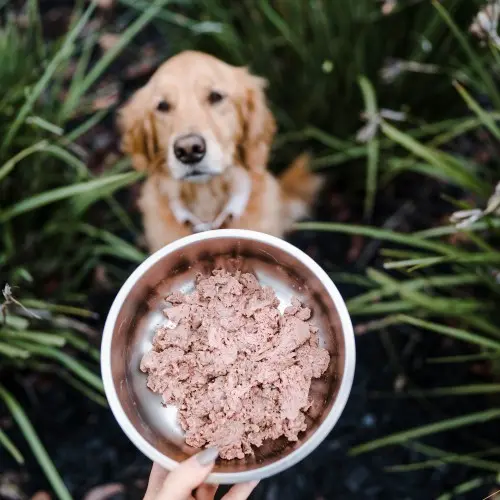
What Does the FDA Say About Grain-Free Dog Food?
The United States Food and Drug Administration (FDA) initially announced in July 2018 that it was investigating reports of a heart disease called canine dilated cardiomyopathy (DCM) in connection with dogs eating certain foods, many of which were labeled as “grain-free.” This announcement initially sent a panic through the dog world as pet parents ran back to grain-inclusive kibble formulas in an attempt to keep their pups healthy.
This panic turned out to be largely unfounded, as the FDA announced in December 2022 that they were unable to prove a correlation between grain-free diets and DCM.
In fact, the FDA’s research into a potential connection between grain-free dog food and DCM may have been biased and flawed right from the beginning.
What Is DCM in Dogs?
Typically found in large and giant dog breeds such as Doberman Pinschers, Great Danes, Irish Wolfhounds, and Boxers, dilated cardiomyopathy (DCM) is a disease that makes it more difficult for the heart to generate enough pressure to pump blood through the vascular system. The most common symptoms of DCM include:
•Weakness and lethargy, including weight loss, fainting spells, and collapse, due to the heart’s inability to pump blood throughout the body
•Respiratory issues, including difficulty breathing, a distended abdomen, and coughing, can be caused by blood becoming congested in the lungs
A variety of conditions can cause the heart to contract poorly, potentially contributing to DCM, including:
•Poor blood flow to the heart
•Prolonged rapid heart rate
•Heart inflammation (myocarditis)
•Low thyroid levels
•Amino acid deficiencies (especially taurine)
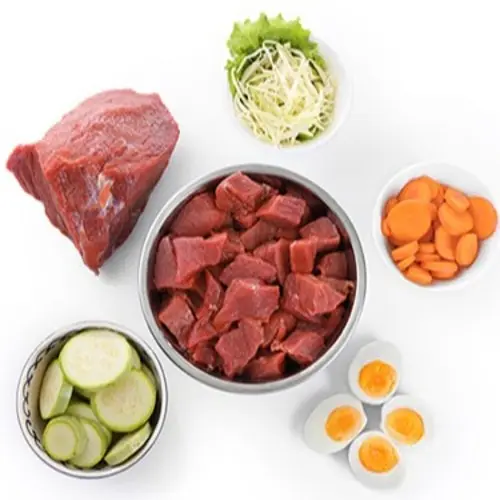
The Importance of Taurine for Dogs
The basic building blocks of protein, there are 22 amino acids the body needs to function properly. Taurine helps to regulate and generate nerve impulses, supports the maintenance of normal fluid balance, and is used in the brain, nervous system, and visual pathways.
While many dogs make taurine from other amino acids, some dogs have higher taurine requirements or have a metabolic abnormality that impairs taurine utilization and synthesis. Large and giant dog breeds are at a higher risk of developing taurine deficiency, although it can occur in any dog.
Taurine is found in meat, fish, and milk—and it’s completely absent from grains.
If you’re worried about your dog’s heart, one of the best things you can do is to feed a raw, meat-based diet (especially one containing organ meat), because it contains high levels of naturally occurring taurine.
Kibble and canned food may or may not add supplemental taurine to their formulas, but they typically use meat meals and by-products rather than whole meat, making the foods poor choices for dogs that need taurine in their diet to stay at peak levels of health.
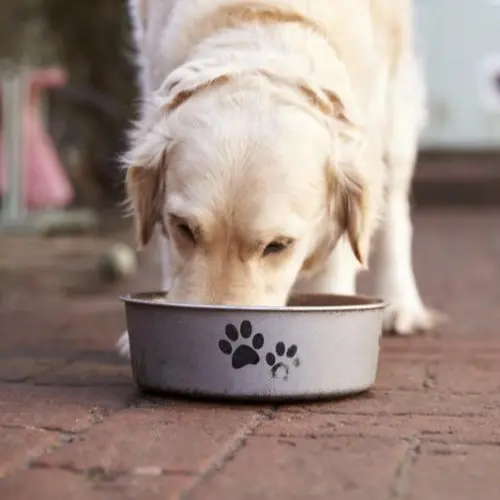
Do Dogs Need Grains?
No, dogs do NOT need grains in their diet. In fact, PhD animal nutritionist Dr. Richard Patton said, "Dogs don't need grain of any kind. They do require small amounts of soluble carbohydrate, which can be found in meat in the form of muscle glycogen."
Is Grain-Free Bad for Dogs?
It depends on how you define “grain-free.” A diet that is naturally grain-free, such as a raw diet, is actually great for dogs. However, grain-free kibble tends to be bad for dogs.
Problems With Grain-Free Kibble
Dogs can get all the carbs they need from muscle glycogen. Grain-free kibble typically contains AT LEAST as many carbohydrates as grain-inclusive kibble, and it often contains even more carbohydrates. If you choose to include kibble in your dog’s diet, find one with the lowest percentage of carbohydrates you can find.
Reasons Grain-Free Kibble Is Bad for Dogs
Here are some of the top reasons you should stay away from grain-free kibble:
•Lectins are plant proteins found in grain-free kibble that can make your dog sick by interfering with their digestive enzymes, leading to inflammation, and blocking the absorption of important nutrients such as zinc, phosphorus, iron, and calcium.
•Glyphosate, an herbicide sold under the brand name Roundup, is the most prevalent toxin in food today. In 2015, the World Health Organization’s International Agency for Research on Cancer (IARC) classified glyphosate as “probably carcinogenic to humans,” and other studies have shown it’s carcinogenic to animals. 94% of soybeans (a common carbohydrate found in grain-free kibble) in the United States are genetically engineered to tolerate herbicides like glyphosate, leading to more than 117 million pounds of glyphosate being applied to soybean crops per year.
•Phytic acid, which is found in high levels in legumes, lentils, peas, potatoes, beets, and other ingredients commonly found in grain-free kibble, limits the retention of manganese in the body. Manganese is crucial to help dogs make fatty acids, metabolize carbohydrates and protein, and produce energy. It also plays a role in the maintenance and health of cartilage and bone in joints.
•Low-quality starches like green peas, potatoes, and sweet potatoes are cheap ingredients that help hold grain-free kibble together, but they can be highly inflammatory in dogs. Additionally, these ingredients have been linked to skin conditions, digestive disorders, and other health issues in dogs.
•Low-quality proteins such as soy, peas, lentils, and beans are cheap sources of protein that are high in starch and add calories to your dog’s diet without adding anything of value. They are essentially “empty calories” with no real nutritional value for dogs and a lot of potential downsides.
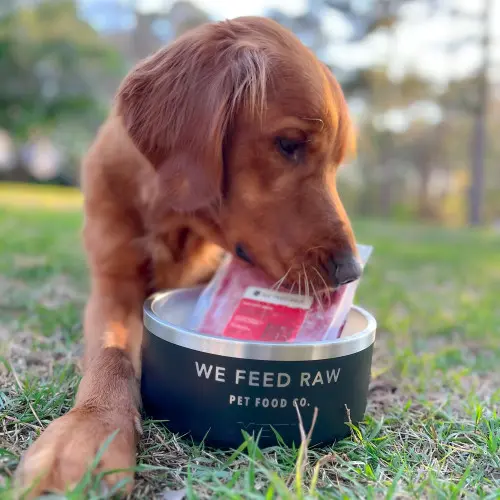
Is Grain-Free Good for Dogs?
A diet that is naturally grain-free, like We Feed Raw, is an excellent diet for dogs, as long as it is nutritionally complete and balanced. If you choose a commercial food of any kind, it should meet AAFCO nutritional requirements for your dog’s particular life stage (We Feed Raw meets AAFCO’s nutritional requirements for dogs of all life stages).
If you feed a cooked or raw DIY diet, you should work with a veterinarian or an animal nutritionist to create a fully balanced diet for your dog. You may need to add supplements to ensure your pup gets all the vitamins and minerals they need.
Is Raw Food Good for Dogs?
Yes, a nutritionally complete and balanced raw diet for dogs is an excellent choice! That said, not all raw diets are nutritionally complete. An imbalanced raw diet could potentially cause more harm to your dog in the long run than a balanced kibble.
That’s one thing that makes We Feed Raw so great—our patties are nutritionally complete and balanced, we tell you how much to feed your dog each day, and we ship the food directly to your door. All you have to do is thaw, portion, and feed to know your pup is getting all the nutrients they need—and none of the fillers they don’t.
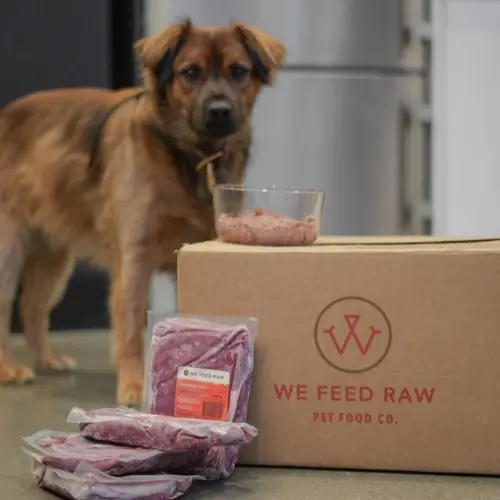
What Is the Best Food for Dogs?
While there is no one food that’s best for ALL dogs, We Feed Raw is the best choice for most dogs. Our species-appropriate complete and balanced patties provide the best nutrition possible for the majority of pet pups, and we make feeding raw as easy as it can possibly be.
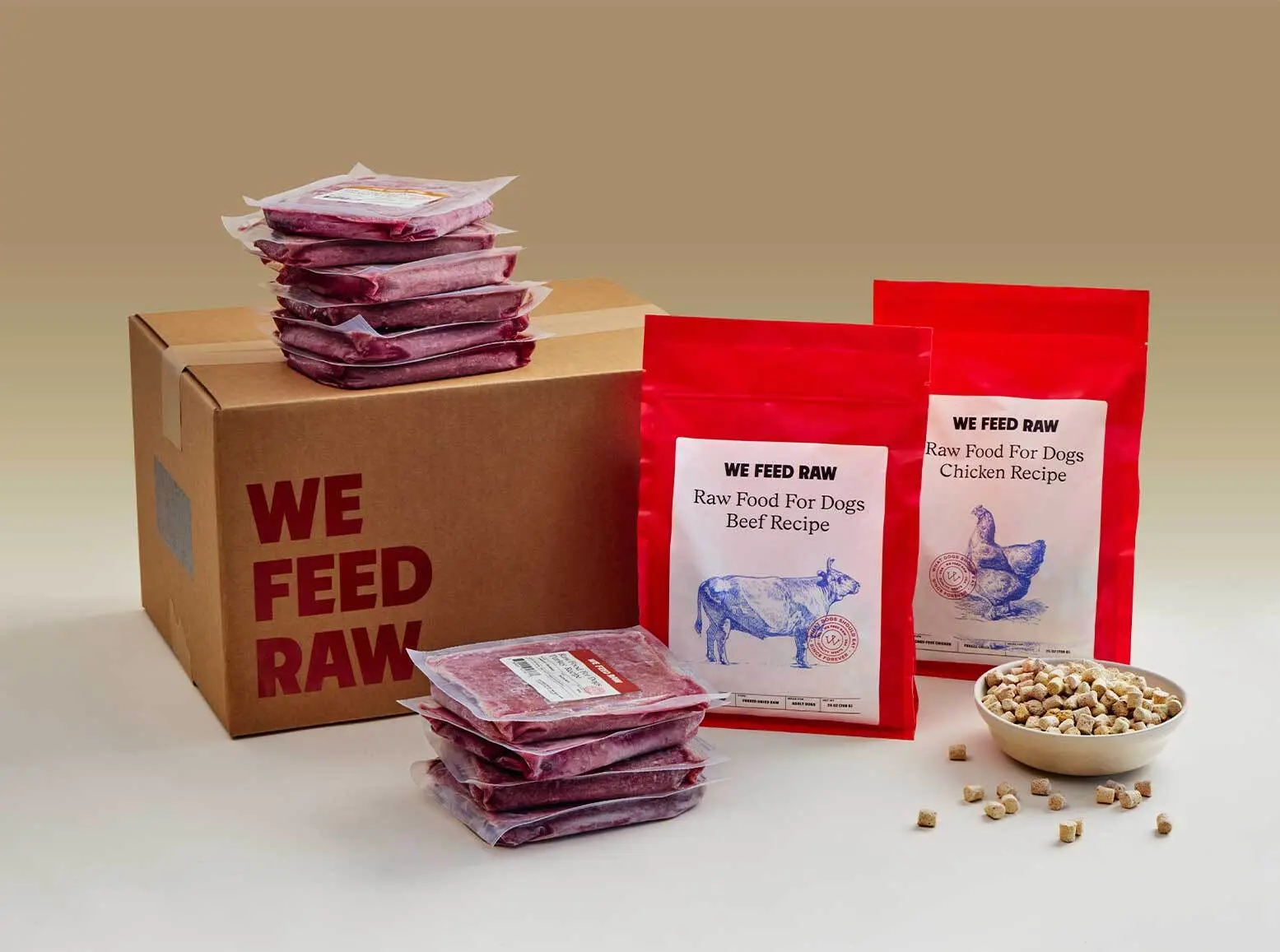
Our Meals Change Lives.
(Theirs + Yours.)
See health improvements from our raw meals in as little as 1 week.
